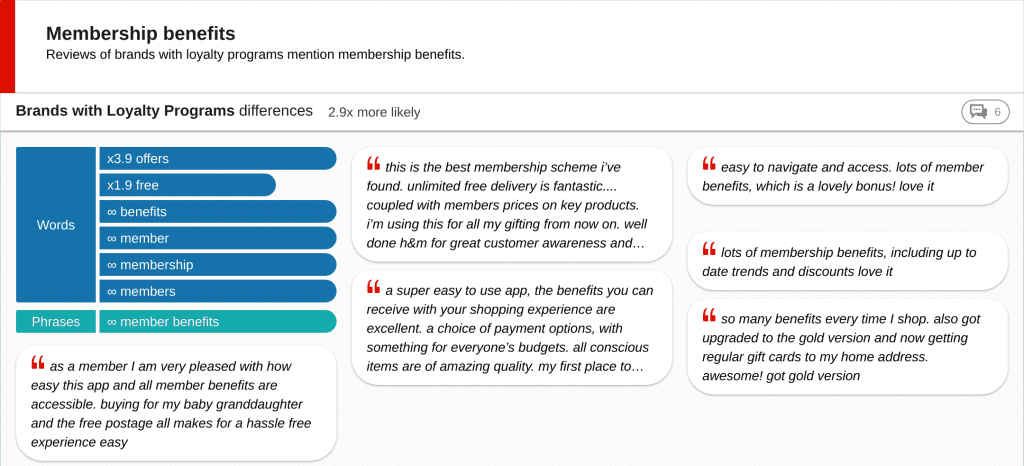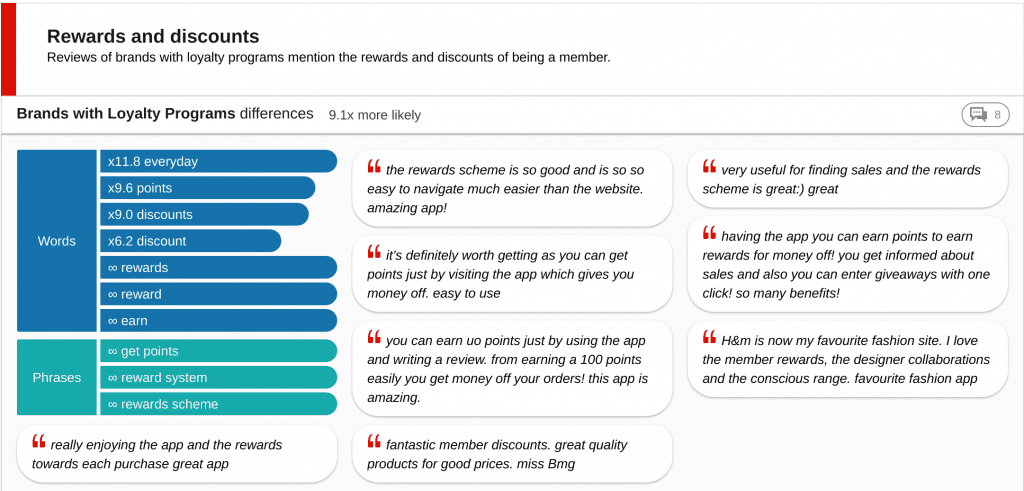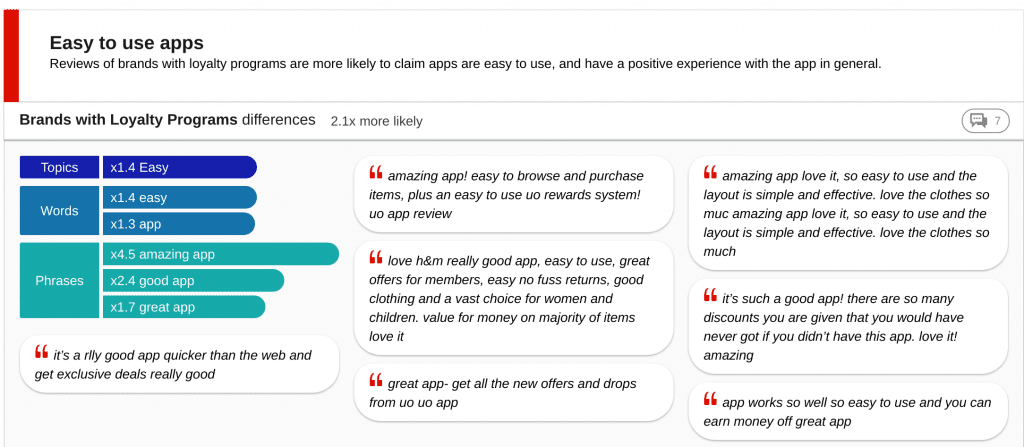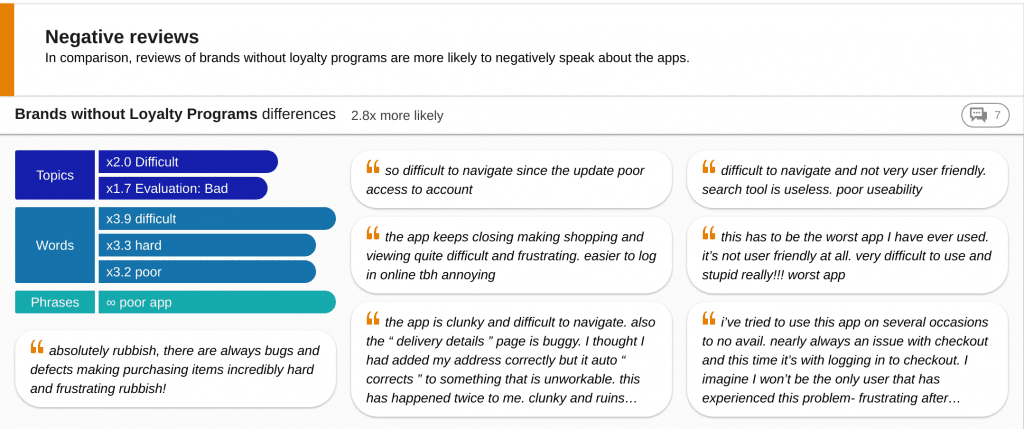Customer loyalty insights in the fashion industry

Customer loyalty programs are growing in popularity among fashion brands. They’re an essential marketing tool for building long-term relationships with consumers and giving shoppers an incentive to keep coming back for more.
Loyalty programs help to increase customer lifetime value, generate a plethora of consumer insights examples and build brand affinity. But while a stellar loyalty program can help grow your business, it isn’t always a silver bullet.
We wanted to understand whether having a customer loyalty program positively impacts customer reviews. Are loyalty programs mentioned at all in customer feedback? And if so, how do membership benefits or rewards programs affect how people perceive fashion brands?
Using Relative Insight, a text analysis platform, we sought to uncover customer loyalty insights. We collected thousands of app reviews from various fashion brands with loyalty programs (Gap, H&M, Urban Outfitters) and without loyalty programs (Size?, Next, River Island and Zara). We then compared these two sets of language data in the platform to pinpoint the significant language differences between them. In digging deeper into review data, brands can benchmark themselves against key competitors and decide whether their current strategy could be strengthened.
Brands with customer loyalty programs
Gap, H&M, Urban Outfitters
Loyalty programs can be hugely beneficial for customers, who are rewarded for their various shopping behaviors. But one of the questions we sought to ask was simple: do customers actually acknowledge loyalty programs in their reviews?
The answer is yes. We found that customers who review fashion brand apps with loyalty programs mention a variety of ‘loyalty perks’ such as discounts, points, rewards, offers, benefits and earnings. This shows that loyalty programs are recognized and used by a large portion of customers, who take the time and effort to understand what the various bonuses and reward schemes entail. The fact that loyalty programs are mentioned in reviews also bodes well for brands who want to gain traction to their rewards scheme, and make new customers aware of such initiatives.


Throughout the reviews of brands with loyalty programs, customer feedback was largely positive. We saw a significantly higher use of words like amazing, love, obsessed, great and cool in this data set. This strongly suggests that implementing a customer loyalty program positively influences consumer opinion of the brand and app on a larger scale.

In our customer loyalty insights analysis, we also discovered that reviews of brands with loyalty programs were twice as likely to mention how easy these apps were to use. Again, we saw an increased use of positive phrases such as amazing app, good app and great app. By creating a single hub whereby customers can easily browse, shop and manage their account and membership benefits, these brands have enhanced their customer experience.

Brands without customer loyalty programs
Size?, Next, River Island and Zara
In contrast, reviews of brands without loyalty programs were almost three times as likely to have negative undertones. For instance, words like difficult, hard, poor and bad were used to describe the user’s experience of the app. Issues which were raised by customers across all four brands included “poor access to account”, “difficult to navigate” and “not user friendly”. Moreover, customers were more likely to mention experiencing various difficulties with checking out.
This could suggest that brands with loyalty programs pay closer attention to their app structure and UX design. The integrated rewards system needs to be seamless in order for consumers to talk positively about this feature, which could explain why there is a bigger discrepancy between reviews of apps with loyalty programs and those without.

Review data is a valuable source of customer insights. In this case, comparing review data facilitates a sophisticated approach to competitor benchmarking to help brands glean customer loyalty insights. These findings can be used to help organizations take an informed approach to developing customer loyalty programs. This analysis makes it clear that creating a robust loyalty program has the ability to stimulate positive customer reviews which in turn builds trust, brand affinity and credibility.
